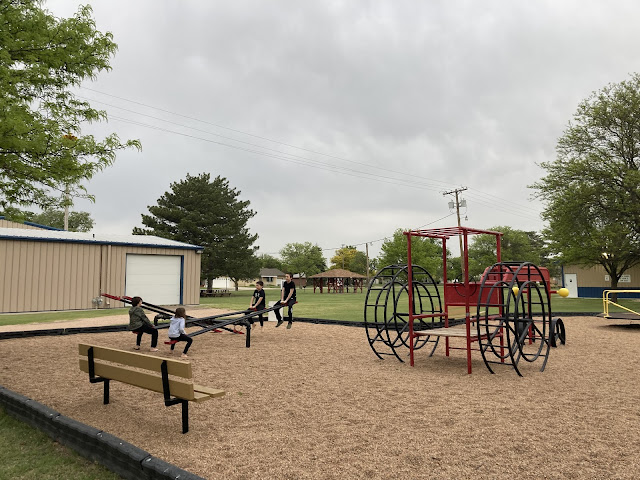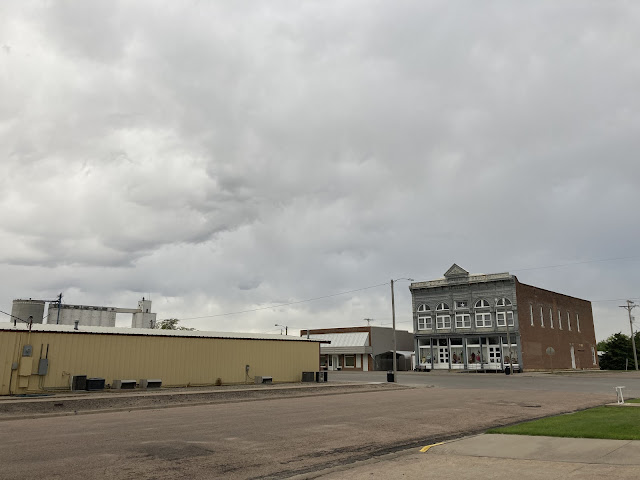The town of Park used to be known as Buffalo Park, according to the welcome sign. A railroad station sign also says "Buffalo Park," and the water tower (visible from five miles away) has a buffalo on it. Some other things in the town include a church, an RV park, and a fairly new restaurant called Buffalo Park Station.
We noticed a lot of houses with water tanks in front of them, which made us wonder why. We had just played at a park in Gove City, but playing at a park named Buffalo Park in a town called Park that used to be called Buffalo Park? Too irresistible for us to withstand.


















